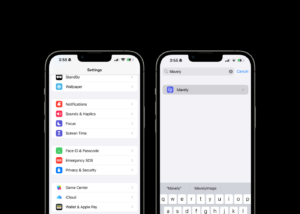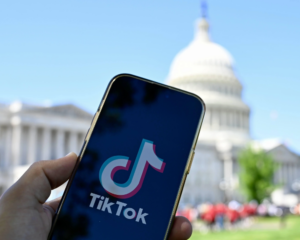As an influencer, you may wonder how you can exceed the expectations of the brands you work with. It all starts with the influencer brief.
An influencer brief is a roadmap brands provide influencers at the start of a collaboration. It’s important to pay close attention to them so that you make sure you are meeting and exceeding the brand’s goals.
Keep reading to learn everything you need to know about influencer briefs.
What is an Influencer Brief?
The best way to think of an influencer brief is as a set of instructions from brands to creators. It outlines the social media campaign and offers overall creative direction, as well as specific requirements for individual posts.
Influencer briefs reflect the goals of the brand and help ensure that the brand and the influencers they’re working with are on the same page.
Brands put a lot of time and energy into creating influencer briefs and want to know that their affiliate marketing campaigns will be effective. It’s important to pay attention to the briefs so that you can give the brands what they want and even exceed their expectations.
What’s Included in an Influencer Brief?
Influencer briefs are made up of several elements, including a brief introduction of the brand, information about the campaign, the deliverables that are expected from the influencer, the campaign’s publishing timeline, payment terms, and more.
Section One: Introducing the Brand and the Campaign
Before introducing the campaign, most brands begin their influencer briefs by providing insight into their mission and values. Next, an influencer brief outlines the upcoming campaign, including the name of the campaign, its purpose, the brand’s goals, and the target audience. It should also outline the brand’s rights to the content you create. It may state whether the brand owns your content for a term, such as six months or a year, or that the brand owns your content indefinitely.
This section may also include key performance indicators, or KPIs, which outline the analytics that the brand uses to monitor the campaign’s success. Common influencer analytics include traffic, engagement, conversions, brand awareness, audience growth, and return on investment. It’s crucial to pay close attention to this section to make sure that your content aligns with the brand’s goals.
Section Two: Influencer Deliverables
The next section outlines the deliverables that are expected from you. It will tell you how many specific posts you are contracted to create for the campaign, which platform they must be posted on, and the style of the post.
For example, if you’re an Instagram influencer, the brand may ask you to create two Instagram feed posts and three Instagram stories for the campaign. If you’re a YouTube influencer, you may be asked to create a certain amount of videos for the campaign. If you do influencer marketing across several platforms, you may even be tasked with creating a mix of posts for each one.
This section often offers some creative direction, such as talking points to use in your posts. If the brand has specific call-to-actions they want you to use on your posts, such as directing your audience to a link or discount code, they will also outline those instructions in this section.
Lastly, the brand may include visual guidance in this section. That can include colors they want you to use in your posts, brand logos, and other inspirational content for the visual aspect of the campaign.
Section Three: Publishing Timeline
Next, the brand will outline the publishing timeline of the campaign, which will clarify how often and on what dates you are expected to share the campaign posts.
If the brand has a content approval process that you must follow before posting, they will include that in the campaign brief. It’s common to request approval of content from the brand before posting, and the influencer brief should include instructions and contact information for the content submissions.
Section Four: Payment Terms
Finally, the influencer brief should spell out the payment terms so that you know up-front how and when you will be compensated for your content.
Before agreeing to partner with a brand, check that the payment includes monetary compensation rather than only free services or products. Some brands may try to compensate micro influencers or nano influencers this way; however, it’s important to negotiate a monetary payment for your work. Know your value as an influencer and ask to revise payment if necessary.
How to Exceed a Brand’s Expectations
The best way to exceed a brand’s expectations and make them want to continue a partnership with you is to pay close attention to the influencer brief and deliver everything they ask for on time. Next, put time into creating high-quality content for the campaign that you know will connect with your audience and produce positive results for the brand.
Additionally, do not be afraid to ask a brand for clarification on anything contained in the brief that may be unclear. Asking questions will show the brand that you care, are invested in the process, and that you are putting in the extra work to get the campaign right.
Finally, make sure that you craft your posts around the KPIs that the brand outlines in the influencer brief. For example, if one of the KPIs was to increase the brand’s mentions on social media, ask your audience to tag you and the brand in a post when they make a purchase.
Most brands include increased conversion as a KPI. Sharing your referral link, affiliate link, or discount code multiple times on your Instagram Stories throughout the campaign is an easy way to get your audience shopping and to increase conversions.
Examples of KPIs and Analytics on an Influencer Brief
You will most likely see the following KPIs and analytics on an influencer brief:
- Engagement: This includes how much interaction your posts get via comments, likes, shares, plays, and saves. You can track your engagement by looking at the analytics for each social media platform.
- Traffic: How many people visit the brand’s website from your social media pages? The amount of traffic you can produce for a brand will depend on your audience size, how engaged your followers are, and how often you post.
- Sales/conversions: Do your posts create sales for the brand? An easy way for brands to track this KPI is by tracking how many customers used your personal link or discount code during the campaign.
- Visibility: The brand may be using the campaign to grow its own social media following, so it will track how many new followers it gained and how many times its handle was tagged throughout the campaign.
Rock Your Influencer Brand Briefs
The next time a brand sends you an influencer brand brief, you’ll know exactly what to expect and how to approach it. Brands are always impressed with creators who go above and beyond for their campaigns, and those are the influencers that they will want to work with time and again.
If you pay attention to brand influencer briefs and deliver quality content, you will be sure to impress brands and grow your influencer marketing business. For a free influencer platform where you can connect with brands and get real-time influencer analytics, plus other educational tools, check out Mavely.
Track Influencer Analytics on Mavely
Want real-time analytics from your affiliate links? Mavely is a free platform that offers actionable analytics, as well as courses from industry experts and dedicated account managers.
Plus, Mavely connects influencers with brands that are perfect for your niche. You don’t have to be a macro-influencer to succeed in influencer marketing. Mavely works with micro-influencers and nano-influencers to curate partnerships that benefit both the influencer and the brand. Sign up today to start earning!






